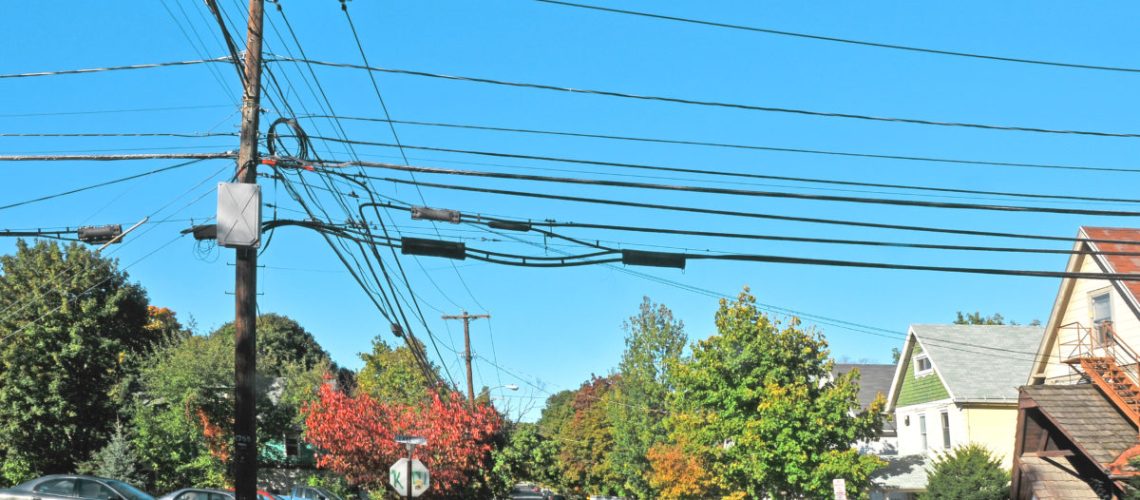IREC’s latest analysis compares group studies with serial solar interconnection studies, concluding that while group studies can help manage queue challenges, they don’t significantly expedite necessary grid upgrades.
The Interstate Renewable Energy Council (IREC) has analyzed the shift from serial to group solar interconnection studies across five states. The analysis shows that under specific circumstances, group studies can alleviate some queueing issues, however, they do little to accelerate essential grid upgrades as solar continues to expand. In some cases, group studies may actually slow down the interconnection process.
IREC’s report, “Thinking Outside the Lines,” focuses on group study programs in California, Massachusetts, Minnesota, Oregon, and North Carolina. The report describes the formation of group studies and their related timelines, study methodologies, management of project modifications and withdrawals, and the allocation of upgrade costs.
A primary advantage of group studies is found in areas with a high volume of interconnection applications tied to the same power grid. In such regions, projects can navigate through queues more efficiently and cost-effectively.
However, IREC also notes a drawback to group studies: They can take a lot longer to complete than individual studies. Initiating a group study can take from 40 days to 12 months, depending on how quickly projects are accumulated. Once underway, the more complex group study can take an additional 247 to 490 days to complete.
Initiating group studies presents its own set of challenges. In certain regions, solar power group studies must collect a minimum number of projects before launching, leading to uncertainty surrounding their commencement dates. On the other hand, some areas operate with fixed start dates. Missing a start date can postpone a project by a full year.
In the PJM interconnection region, group studies are launched every six months, with the preceding six months focused on collecting projects. When these studies commence, they evaluate hundreds of projects across various regions under their jurisdiction.
However, the PJM interconnection process has been put on hold for multiple years, as the grid management organization grapples with an influx of solar projects. By comparison, a lone interconnection application outside of PJM for a standard-sized, distribution-level solar project can get started within twenty business days and be completed in just four months.
Another benefit of group studies is cost allocation. As IREC notes, in Oregon, utility company PacifiCorp divides 50% of a group study’s charges per project, with the remaining half based on the project’s size in megawatts. In another example of cost allocation, an 80 MWac solar project in a North Carolina group study incurred a fee of just $3,000.

This $3,000 fee for a significant North Carolina project stands in stark contrast to the $18,600 fee for a single, ongoing 3.6 MWac project in New York, as relayed to pv magazine USA by a local developer. This disparity suggests that, on a per-megawatt basis, New York’s study fee is roughly 138 times costlier than North Carolina’s.
The IREC report also shed light on cost allocation challenges. In Minnesota, Xcel Energy’s upgrade costs were so steep that every participant withdrew upon discovering their share of the expenses. In contrast, Massachusetts is trialing a “beneficiary-pays” approach, wherein upgrade expenses are distributed among existing group study members, prospective interconnection customers, and ratepayers, and are determined by the benefits each group receives.
The Massachusetts group study process was put in place after state utilities say they were caught off guard by how much solar was submitted for connection to the power grid when the SMART program was launched.
Earlier studies from the American Council on Renewable Energy (ACORE) have pinpointed fundamental issues with interconnection cost allocation. Specifically, existing customers reap substantial benefits from grid upgrades without shouldering the associated costs. ACORE’s investigation delved into 12 power grid upgrades driven by renewable energy projects, evaluating both the costs and the benefits of these upgrades. The findings were clear: Approximately $1 billion in benefits, funded by renewable projects, extend across the entire power grid, benefiting all energy sources, renewable or not.



